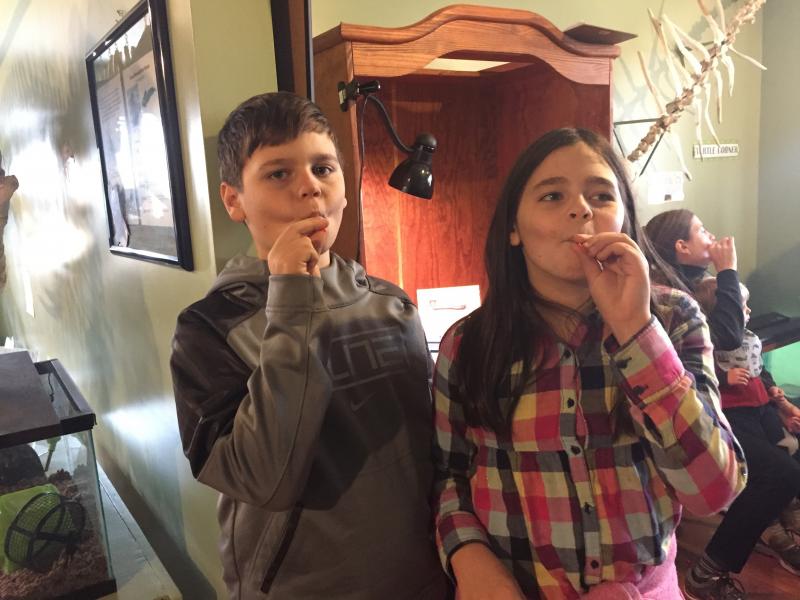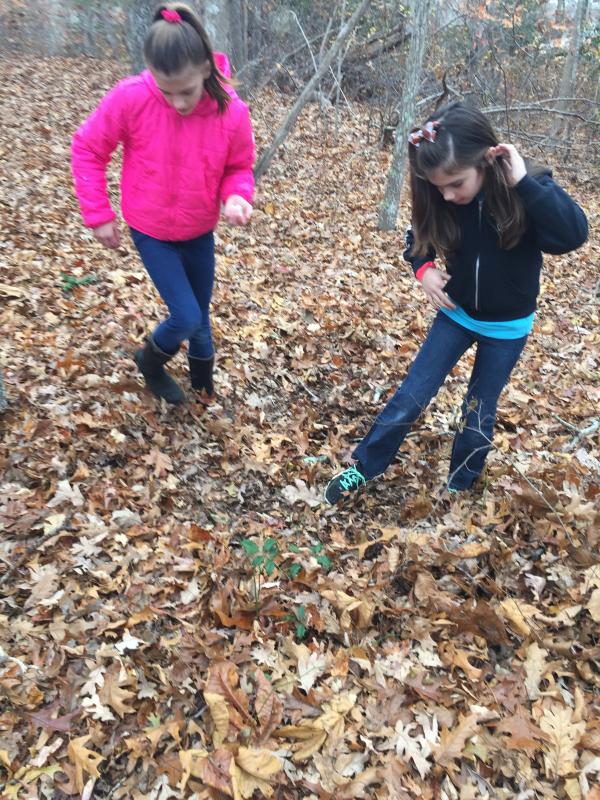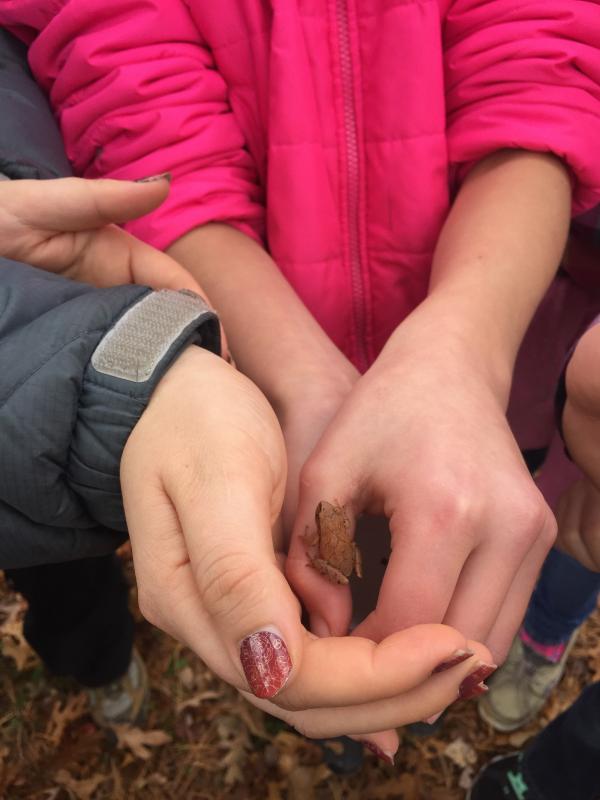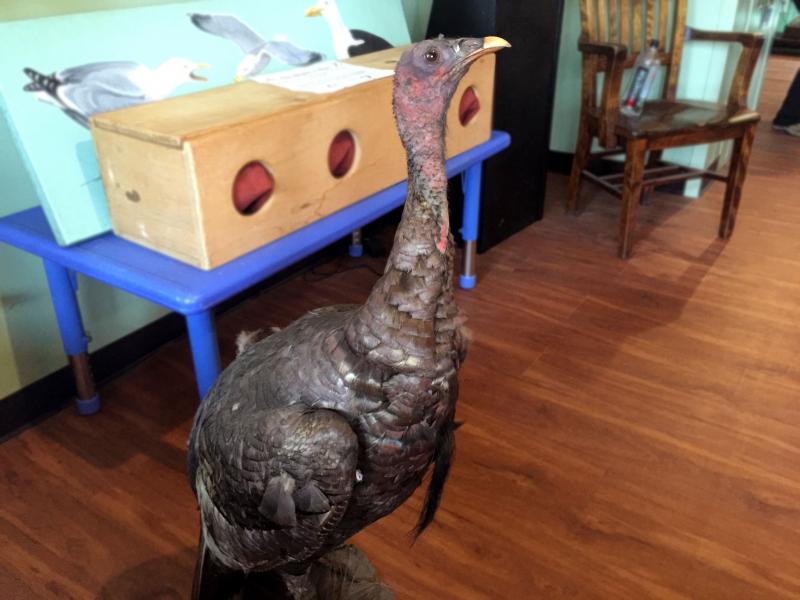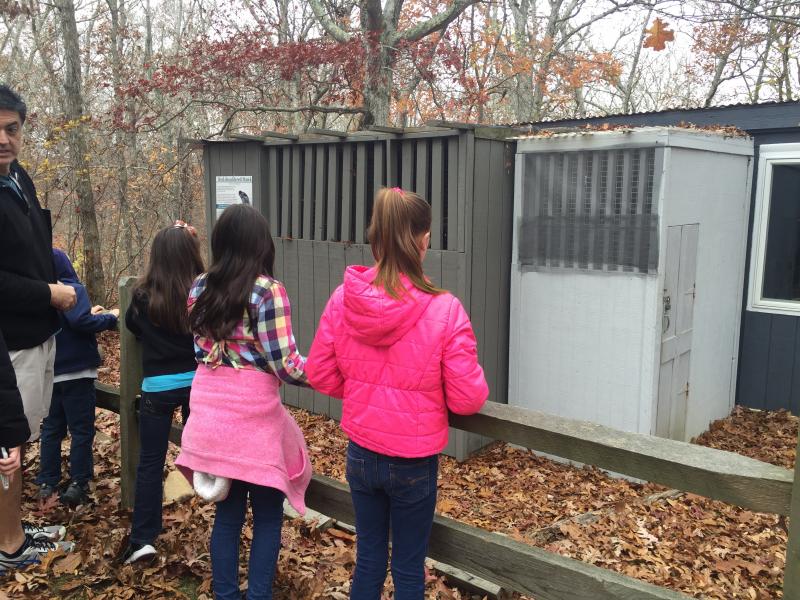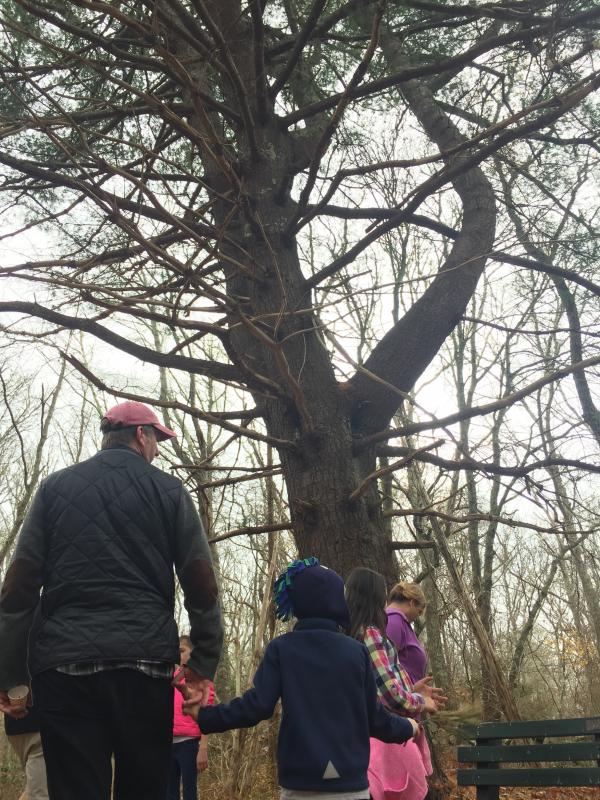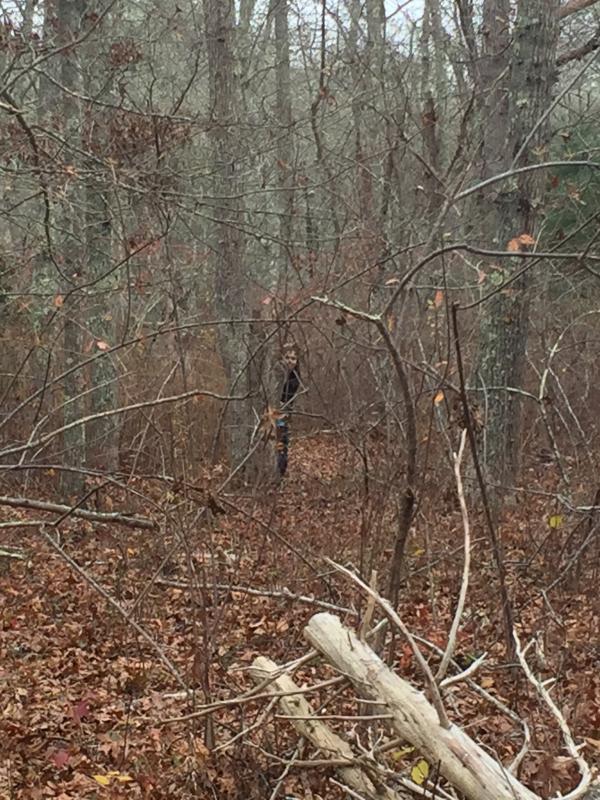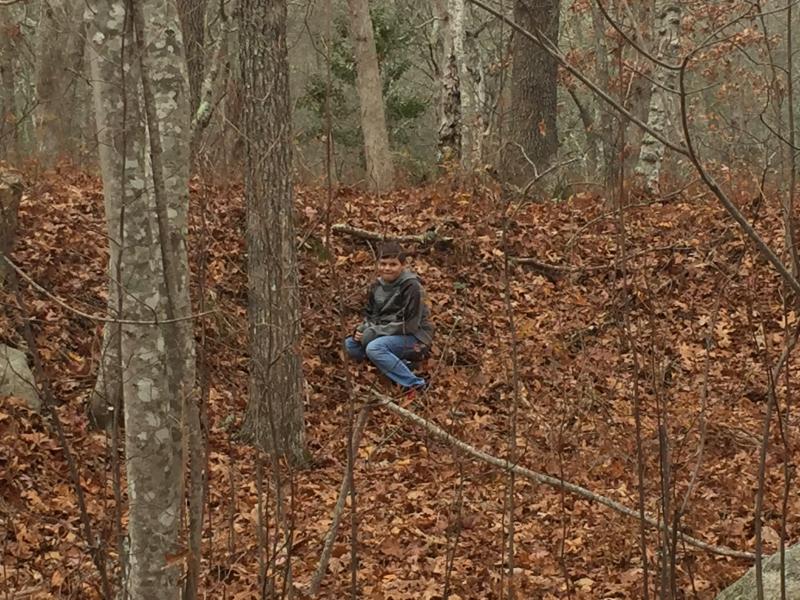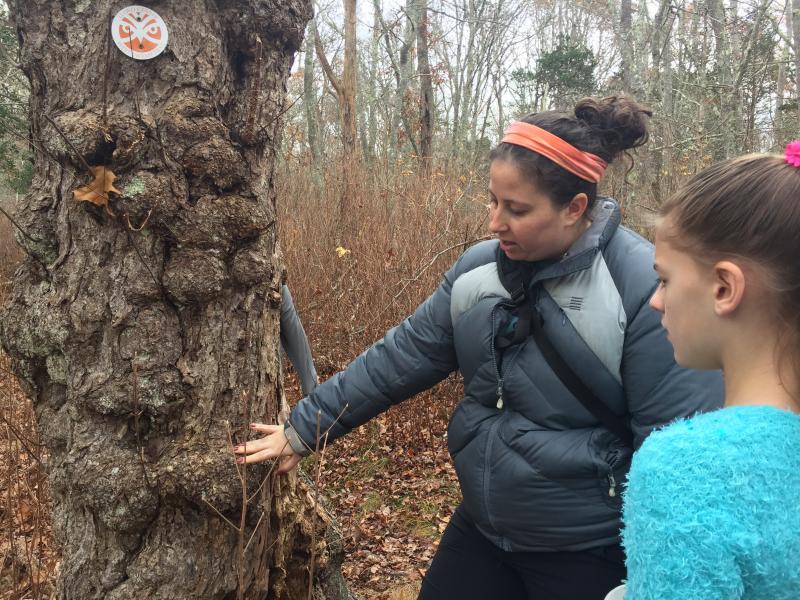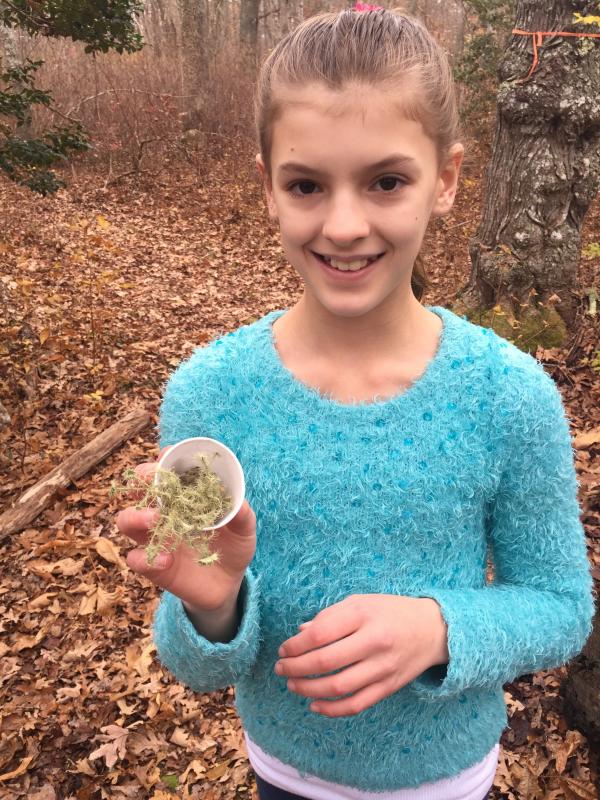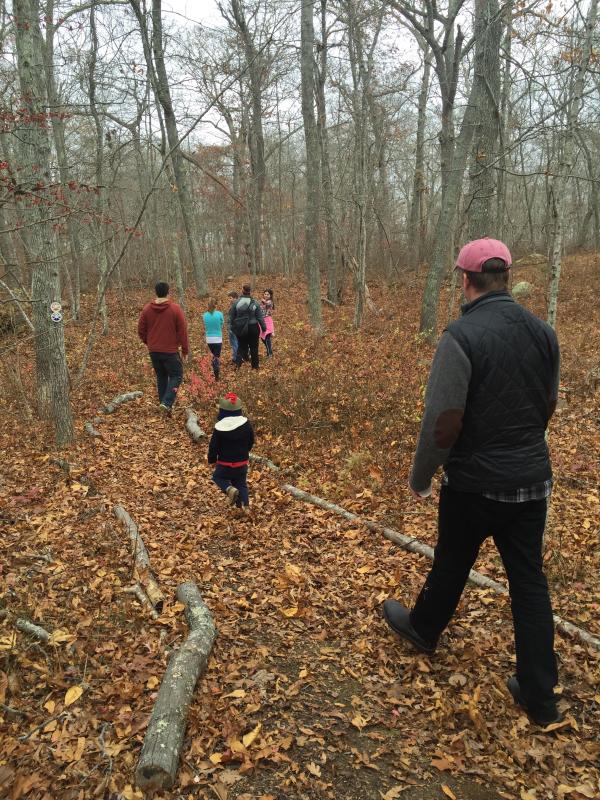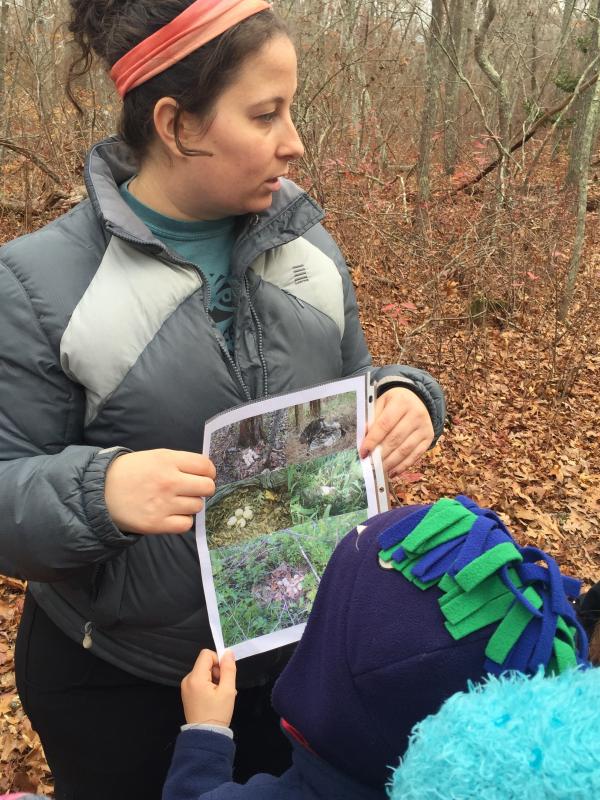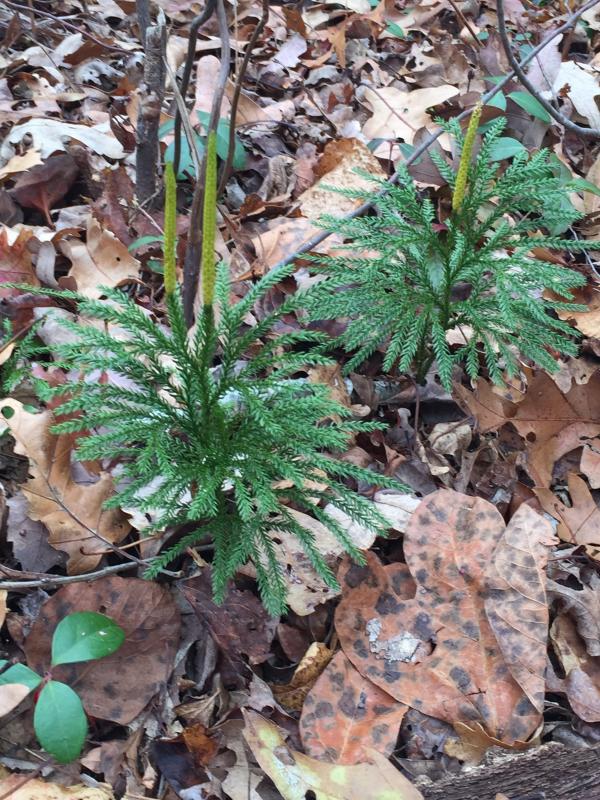11 Things to know about turkeys before Thanksgiving
Lloyd Center visitors built turkey callers and practiced foraging like turkeys before heading out to search for the birds on November 19.
“We associate turkeys so much with Thanksgiving, so it’s fun to learn about them before we have a whole holiday themed around turkeys,” said Outreach Specialist Jen Wimmer.
While turkeys could be heard on the property, the group also interacted with frogs and salamanders, lichen and mushrooms, and prehistoric plants.
Here are the top 11 facts that attendees took away from the turkey-themed event.
1. Cheap turkey callers are equally effective.
Before starting the search for turkeys on Center property, Wimmer led a quick demo on how to make turkey callers. All you need is a straw and a Dixie Cup.
You start by sucking your cheeks into a kissy face, and then make a pucker sound, said Wimmer. Once you’ve got that down, make the sound into the straw, and amplify it by sticking the straw through the bottom of the cup.
2. Turkeys aren’t always brown.
Turkeys depend heavily on camouflage for survival, said Wimmer. They are typically brown for this reason, however, they can also be white.
“I’m going to try to call the albino [turkey] at my papa’s house,” said nine-year-old Alex DaSilva after making his turkey caller.
3. A turkey does have enemies.
“The coyotes around here particularly love the turkeys,” said Wimmer. However, bobcats and larger birds of prey will also go after turkeys for a meal.
4. Turkeys are sloppy homemakers.
Turkeys pile leaves and sticks into a nest on the ground, but it’s not as intricately woven as a bird’s nest.
“Squirrels are probably second to turkeys as worst nest builders,” said Wimmer, explaining that squirrels also ball together sticks and leaves, but don’t even have an entrance for their nest. They hide their babies in the middle of the mass, making a new entrance every time they go back and forth. Squirrels also move their young frequently to evade predators.
5. Turkeys are consistently on the lookout for food.
As they walk, turkeys kick up leaves and dirt in search of nuts, seeds, berries, insects, and salamanders to eat, said Wimmer.
"It’ll look like the land got rototilled after a pack of turkeys walks through," said Wimmer. Other signs of turkeys include tracks and feathers.
6. Turkeys can fly.
Although it’s not their main mode of transportation, turkeys can fly about a mile to evade predators, said Wimmer.
However, baby turkeys — called poults — can’t fly off the ground for the first two weeks of their lives.
7. Those dangly red things have names.
A turkey wattle is the flappy piece of skin that hangs from its neck. A snood is the piece of skin that hangs from its beak. The purpose of the wattle and snood is to attract a mate, said Wimmer.
8. Turkeys are not quiet creatures.
Male turkeys make a “gobble” noise, while female turkeys make more of a “put, put” sound, said Wimmer.
9. Turkeys were not the main course at the first Thanksgiving.
“The first Thanksgiving was a mix of whatever [settlers] could gather,” said Wimmer. While turkeys were native to the region, they probably weren’t the main plate on the table, she said.
10. New England’s turkeys are actually from New York.
Turkeys in New England actually went extinct due to deforestation in the 1800s, when mass colonization was taking place, said Wimmer. It wasn’t until the 1950s that turkeys were successfully reintroduced to the region.
New England’s turkeys can be traced to an 18-member flock from New York, said Wimmer.
11. Turkeys have the best of both worlds.
Turkeys specifically reside in areas that include both forest and field. “They forage in the fields, then sleep in the trees at night,” said Wimmer.
The Lloyd Center’s next special event will be a three-hour tour of the property on December 17, 9 a.m.-noon. Event leaders will highlight the natural history of the area, as well as the Center’s history. Visit lloydcenter.org for more information.
